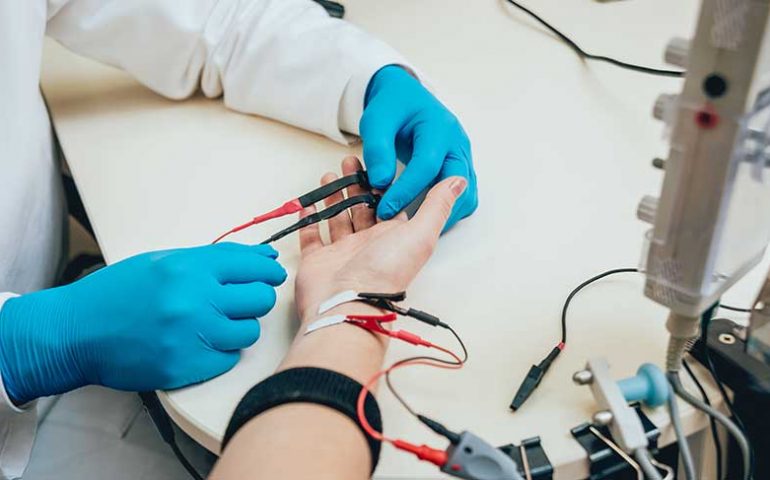
EMG (Electromyography)
EMG (Electromyography): Detailed Description, Discovery, Measured Parameters, and Application Areas
Electromyography (EMG) is a medical test used to measure the electrical activity of muscles. This test is employed to examine muscle movement and contraction processes, aid in diagnosing neurological diseases, and formulate treatment guidelines. Alanya Neurology Specialist Dr. Mustafa Zafer Demirtaş contributes to accurate diagnosis and treatment of patients with his knowledge and expertise in the field of EMG.
Discovery of EMG: The foundations of EMG were laid in the late 19th century. Italian physiologist Luigi Galvani discovered the connection between the electrical activity of muscles and the nervous system. This discovery demonstrated the existence of electrical signals that trigger muscle contraction. This fundamental finding later led to the development of EMG and its application in the medical field.
Measured Parameters and Operation of EMG: EMG measures the electrical activity of muscles. When muscles move, electrical signals are generated during the contraction and relaxation processes of muscle fibers. EMG records and evaluates these electrical signals through electrodes. This helps assess the normal or abnormal function of muscles.
Application Areas of EMG: EMG is widely used in the diagnosis and monitoring of neurological and musculoskeletal disorders. It can contribute to diagnosing a variety of conditions, including neurological diseases, nerve compressions, muscle weakness, muscle injuries, and degenerative diseases.
Types of EMG: There are two main types of EMG: Intramuscular EMG and Surface EMG. Intramuscular EMG penetrates into the depth of muscles using thin needles or electrodes. Surface EMG measures electrical activity on the skin’s surface using electrodes.
Which Diseases Is EMG Diagnosis Used For? EMG can assist in diagnosing conditions such as Amyotrophic Lateral Sclerosis (ALS), muscular dystrophy, nerve compressions, peripheral neuropathies, and musculoskeletal disorders.
Does EMG Diagnosis Have Harmful Effects on Patients? EMG diagnosis is generally safe. However, it should be noted that intramuscular EMG may cause mild discomfort or pain in some individuals. Nevertheless, the potential benefits usually outweigh these temporary inconveniences.
Is EMG Diagnosis Used in Pregnant Patients? Typically, there are no concerns about using EMG diagnosis during pregnancy. However, the risks and benefits of any medical tests during pregnancy should be carefully weighed. Therefore, discussing this with your doctor is important.
Questions and Answers:
- How does EMG diagnosis work and what does it measure? EMG measures the electrical activity of muscles. When the muscle moves, the electrical signals within the muscle cells are recorded and evaluated.
- For which diseases is EMG diagnosis used? EMG can assist in diagnosing ALS, muscular dystrophy, nerve compressions, neuropathies, and other diseases.
- Can EMG diagnosis be used in pregnant patients? Generally, there are no concerns about using EMG diagnosis during pregnancy. However, discussing this with your doctor is important.
- Does EMG diagnosis have harmful effects on patients? EMG diagnosis is generally safe but may cause mild discomfort or pain in some individuals.
- What types of EMG diagnoses are there? There are two main types of EMG: intramuscular EMG and surface EMG.
- When might EMG diagnosis be necessary? EMG can be used to diagnose and monitor neurological or musculoskeletal disorders.
- How was EMG discovered? The foundations of EMG were laid by Luigi Galvani’s discovery of the electrical activity of muscles in the 18th century.
- What parameters does EMG diagnosis measure? EMG measures the electrical signals generated during muscle contraction and relaxation.
- How does Alanya Neurology Specialist Dr. Mustafa Zafer Demirtaş contribute to EMG diagnosis? Dr. Mustafa Zafer Demirtaş contributes to accurate diagnosis and treatment of patients with his knowledge and experience in the field of EMG.
- For which conditions is EMG diagnosis used? EMG can be used to evaluate muscle weakness, degenerative diseases, neurological disorders, and other conditions.




